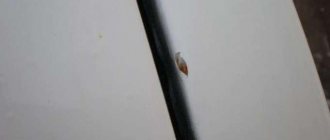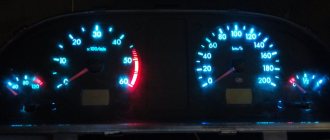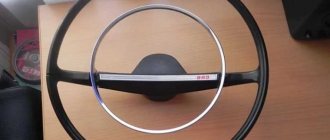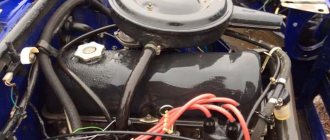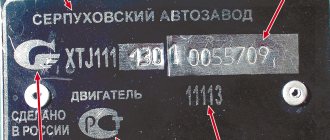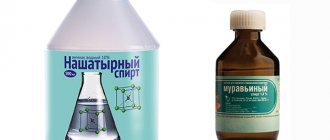How can you wash linden, poplar and pine from the surface of your car at home?
There are many examples of the use of household or pharmacy chemicals. Why is this direction attracting more and more car owners? The fact is that the properties of some drugs are not inferior to analogues from thematic auto chemical products, and their price is several times less. To be fair, we can give an example from a related area: how to polish plastic headlights yourself by hand - with toothpaste for several tens of rubles or a polishing kit for several thousand rubles?
So, you can wipe off poplar resin without a trace, traces from linden or glue from pine onto fresh:
- Ammonia (a solution of ammonia in water).
- Alcohol solution of boric acid (3%).
- Blue clay.
Coming closer to the technology of using this chemistry, the following point arouses interest: are they able to wash off the resin without harming the paintwork. Will this treatment leave various scratches and dull abrasions on the surface of the body?
Clay or medicines
When comparing contenders based on the level of damage caused to paint, clay is a clear outsider. It removes Velcro due to friction. When using alcohol and acid, there is practically no trace of it (it takes a little effort to wipe the stain, and the main mechanism for removing the tar residue is to dissolve it within 10-20 minutes).
Blue clay is often associated with a hologram effect. They say that if you rub in a circular motion, the treated surface will be noticeably different from the untreated one. In theory, it is necessary to scrape off poplar glue and resin residues from other trees only with translational longitudinal movements, without strong pressure, after first moistening the defective area with a soap solution.
In theory, following these rules, the treatment should pass without a trace for the paintwork. But in reality, many observe the opposite - there is a hologram. It is very visible in the sun, on black metallic, and completely undetectable on a white car. Therefore, dark cars require final polishing of the body.
Ammonia and boric acid do not spoil paintwork at all. Negative reviews about them are associated with ignorance of the technology, how to remove poplar buds or Velcro from linden or pine from the surface of a car with your own hands. There is only one remark about the drugs - they act slowly.
What about petroleum based solvents?
Products of petroleum origin and tree resin are reluctant to be washed off. We are talking about such varieties as:
- White Spirit.
- WD-40.
- Kerosene.
- Petrol.
- Carburetor cleaner.
Universal white spirit will only save you from minor contamination. If they can still remove a fresh tarry trace, then even a two-day-old trace of a solvent-like liquid cannot be removed. WD-40, gasoline, kerosene and carburetor cleaner do a better job than white spirit, but they are far from being as effective as medications.
Other means
The global automotive and household goods industry does not stand still. For example, wet wipes with alcohol appeared relatively recently. In the fight against fresh marks, they have proven themselves to be a good remedy. You just need to brush off the buds so that they don’t open. How to do this is one of the topics of further discussion.
Automotive stores also have interesting, modern items for removing stubborn stains. For example, a towel or anti-scrub mitten. The rubberized product copes well with tar stains, but again cleans due to friction. Therefore, the issue with mechanical polishing is not closed.
For your information. It is useless to use vodka instead of alcohol - it does not dissolve tar stains.
How can I remove it using folk remedies?
The ingrained resin can be removed using various homemade “reagents” that you always have on hand.
To achieve a positive result, it is worth remembering an important rule: the fresher the stain, the easier it is to deal with.
Ethyl alcohol, gasoline, turpentine
Cleaning with these organic solvents is carried out in the following order:
- moisten the stain with the selected liquid;
- stand for several minutes;
- a cotton pad or rag is moistened with a cleaner;
- remove the resin with gentle movements;
- moisten a new cotton pad in solvent;
- repeat the contamination treatment.
Do not rub the resinous stain with a dampened cloth, but carefully remove the sticky substance from the edge to the center.
How to clean with nail polish remover?
To work, you can choose a type of cosmetic product with or without acetone.
The step-by-step cleaning instructions are the same as in the case of alcohol or gasoline. The only difference may be the duration of the procedure.
Nail polish remover is less effective at removing resin or artificial resin, so you need to be patient and have enough cotton pads.
Soap and oil
Resin adhesives are stable in water, but they dissolve well in oils. This method of cleansing is based on this. To prevent oil from leaving a greasy trace on clothes, the product is combined with soap. In this capacity, it is most convenient to use dishwashing gel.
Cleaning is carried out as follows:
- The stain is moistened with vegetable oil.
- Wait a few minutes for the resin to dissolve.
- The rags are moistened with dishwashing liquid.
- Wipe the problem area until the traces disappear.
How to remove a stain with Coca-Cola?
The drink contains orthophosphoric acid. It is she who is entrusted with the task of dissolving resinous compounds. Instead of Coca-Cola, you can use any soda with a similar composition:
- Pepsi,
- Sprite,
- Fanta.
The cleansing procedure consists of several steps:
- Coca-Cola is poured into a wide container;
- dip the area with the stain into the liquid;
- stand for several hours;
- Clean off dirt with a soft brush.
Starch
This home remedy helps restore the appearance of fluffy fabrics. All manipulations are carried out in a certain sequence:
- A paste is prepared from starch and water.
- Apply the paste generously to the stain.
- They stand for several hours.
- Wash off the starch and dry the area.
- Remove remaining resin with a cloth soaked in gasoline.
How to remove poplar resin, traces of linden and pine from a car body with your own hands
Getting rid of Velcro means making sure that not even a speck remains from the contact of a tree bud with the paintwork. As already noted, the fourth day is the deadline when the body surface can still be saved without the use of polishing. Later, chemistry is no longer able to remove the famous yellowness that remains after removing the resin.
The proposed method is relevant precisely from the moment the poplar, pine or linden tree gets in contact with Velcro until the end of the fourth day:
- Remove buds from the body surface. This must be done so that the resin does not leak out of them. Use the following method: dampen a cloth in warm water, wring it out as much as possible and brush the tree flowering products to the side. Dry rags are not suitable for these purposes - they do not allow brushing. You should not remove it with your hands or a brush - the Velcro will open at the slightest hard touch.
- Wash the outside of the car. Contactless washing is preferred because it leaves fewer scratches.
- Wipe the body dry. There is no need to worry about defective areas - ingrained resin cannot be smeared with a rag.
- Remove tar stains. Soak a piece of cotton wool or a cotton pad in alcohol/acid and, without applying much effort, wipe off the resin. In most cases, the Velcro mark needs to be soaked: place a swab soaked in chemicals on the contaminated area and leave for 10-15 minutes. After soaking, the stain is removed with a slight movement of the hand.
- Final cleaning of the treated area. Produced using special auto chemicals to remove resin. Usually this is any can with the Bug & Tar Remover attachment. The operation is not always necessary; it is done at will.
How to clean bitumen from the road?
Bitumen on a car is a common thing for car owners. It is enough to drive along a section of road that is being repaired or is hot, and dark stains from tar will cover the body. They can be removed either with improvised means or with specialized compounds.
Liquids at hand
Folk remedies for getting rid of road tar:
Petrol. Every motorist always has it with him. You can use it at any convenient time. Gasoline works great on both fresh and old stains, but in the latter case you will have to put in more effort. It’s easy to use, just apply gasoline to a rag and wipe the dirty surface
You need to act carefully, without making much effort, since the paintwork may come off along with the bitumen. Diesel fuel and kerosene have a similar effect.
Nail polish remover
It is based on acetone, so it easily copes with tar stains. The only condition is the refusal of intense friction.
Sunflower oil. It can be used to get rid of fresh stains before they have time to harden. Apply the oil to a rag and rub it until the body is completely clean. It will take a little effort and time, but the result will satisfy the car owner, since the oil not only removes road tar, but also does not harm the paintwork.
The video will show you how to clean your car from bitumen stains:
Cleaners
If you don’t want to use improvised means, or they turn out to be ineffective, you can purchase special substances in the store that were developed for this purpose. Popular road tar cleaners:
GraSS Antibitum
The product is effective against all types of resins, bitumen and stains from poplar buds. It acts quickly, within 1-10 minutes.
GraSS body cleaner for removing bitumen stains Antibitum is applied to the contaminated surface, left to soften the resin, rubbed and washed off with water with the addition of a degreaser.
The price of a 0.5 liter bottle is 210 rubles.
Autoland
The composition is designed specifically for the care of painted car parts. It is effective against resins, insect marks, poplar buds and bitumen stains.
Autoland body cleaner for bitumen stains and insect traces is applied to the stain for 1-3 minutes, after which it is removed with a foam sponge. If necessary, repeat the procedure.
The price for a 0.5 liter package is 180 rubles.
RunWay
Before use, shake the bottle and then distribute the composition evenly over the surface. After 30 seconds, you need to quickly remove dirt, without pressing. The main active ingredient in RunWay body cleaner for bitumen stains is aviation kerosene.
The price of a 0.5 liter bottle is 250 rubles.
Note: test review of automotive resin cleaners
Just as in the case of gasoline additives for cleaning injector nozzles, quite a few auto chemical manufacturers have rolled out their anti-bitumen products to the market. There are representatives of both well-known foreign companies and domestic teams.
The magazine "Behind the Wheel" tested products from various manufacturers. The essence of the test procedure was to evaluate the effect after using the drug in full accordance with the instructions. Resin cleaners from the following companies took part in the “race”:
- Liqui Moly (Germany – 475 rubles/400 ml).
- Kangaroo (Korea – 330 rubles/400 ml).
- Grass (Russia – 255 rubles/500 ml).
- Doctor Wax (USA – 690 rubles/475 ml).
- Autoprofi (Russia – 170 rubles/500 ml).
- Astrohim (Russian Federation – 150 rubles/500 ml).
- Sonax (Germany – 460 rubles/300 ml).
- Pingo (Germany – 520 rubles/400 ml).
- Texon (Russia – 140 rubles/520 ml).
Conventionally, products are divided into two groups: fast-acting (Astrochem, Liqui Moly, Kangaru, Avtoprofi, Sonax, Pingo), requiring long exposure (Grass, Tekson). Theoretically, the following is expected: the former do not drain, concentrating the entire volume on the affected area, the latter dissolve stains more effectively, but require more consumption. Practice confirms this.
When choosing, it is important to consider the smell. The procedure for interacting with the drug is often slow, so the aroma should not be strong. Everything is aimed at not causing discomfort to the operator, especially in the heat. The mixture from Astrohim most accurately satisfies these conditions.
Almost all compositions cope with the task with dignity. However, there are still favorites - Texon and Astrohim. At a minimal price, they fulfill their purpose as transparently as possible. Let Tekson complete the task with a significant amount of time (withstand at least 5-10 minutes), but he washes off poplar resin and road petrochemicals the first time.
Let's summarize
There are many preparations for removing tar from a car. It is safer to use branded products. But this must be done strictly according to the instructions. Among store offers, Abro, Hi-Gear, Prestone, Doctor Wax, Autoprofi, Texon, Astrohim, Grass proved to be effective.
Traditional methods of washing bitumen and poplar resin are not inferior to “branded” ones, and sometimes even surpass them. Available liquids include turpentine, alcohol, gasoline, and white spirit. The first couple is the most productive.
Many car owners quite often encounter the appearance of traces of tar, especially in the summer, when the main asphalt pavement repair work is carried out. Cleaning a car of resin is a tedious and time-consuming process, during which the paint can easily be scratched. Unfortunately, this problem cannot be solved with a regular car wash, but there are several methods that will help remove resin from the car body and return the shiny surface.

